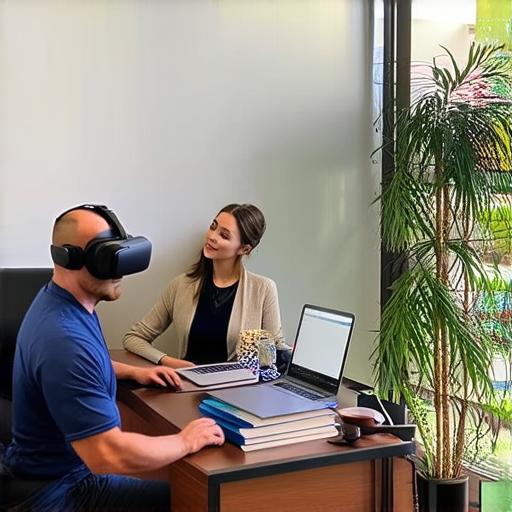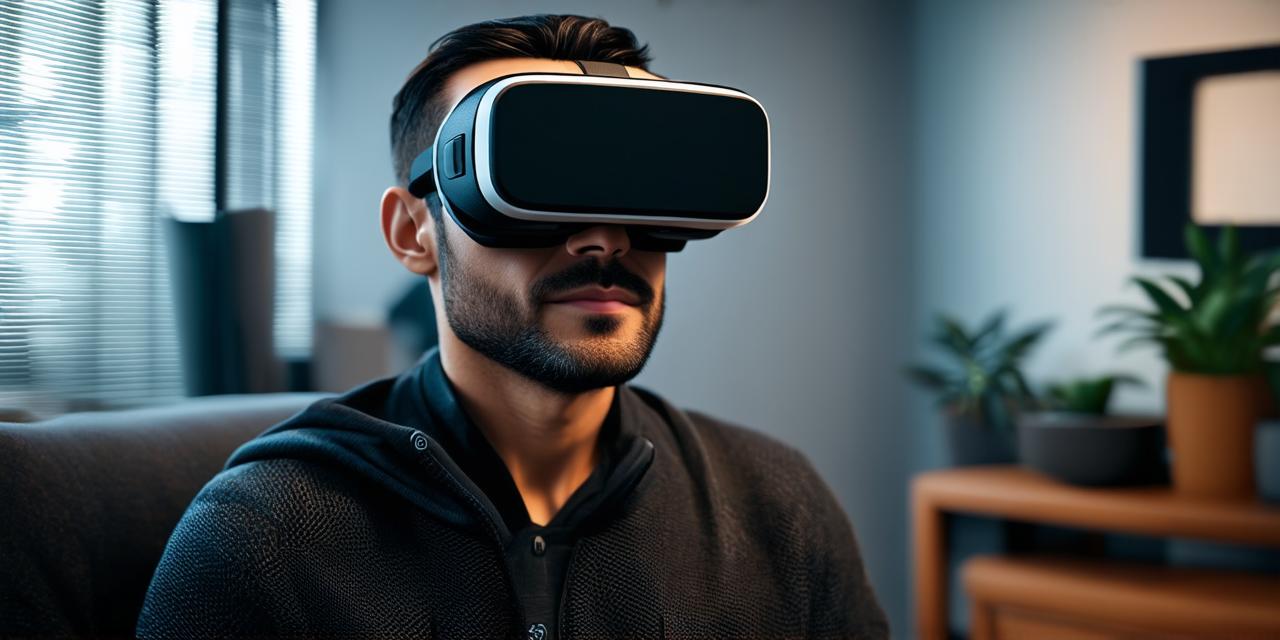Virtual reality (VR) therapy is a new and innovative approach to mental health treatment that is becoming increasingly popular. It uses computer-generated simulations to create immersive experiences that can help patients overcome fears, anxiety, and other psychological conditions.
Why Virtual Reality Therapy?
Virtual reality therapy has several advantages over traditional therapies. Firstly, it is a highly immersive experience that can simulate real-life situations in a safe and controlled environment. This allows patients to confront their fears and anxieties without the risk of harm or danger.

Secondly, virtual reality therapy is highly customizable and can be tailored to meet the specific needs of each patient. It allows therapists to create personalized simulations that address specific triggers or fears, making it an ideal treatment option for patients with complex mental health conditions.
Thirdly, virtual reality therapy can be highly effective in treating a range of mental health disorders, including anxiety, depression, PTSD, and even phobias. Research has shown that virtual reality exposure therapy can be as effective as traditional exposure therapy, with many patients experiencing significant reductions in symptoms after just one session.
Case Studies
Virtual reality therapy has been used to treat a range of mental health disorders in numerous case studies. For example, a study published in the Journal of Nervous and Mental Disease found that virtual reality exposure therapy was as effective as traditional in vivo (real-life) exposure therapy in treating social anxiety disorder.
Another study published in the American Journal of Psychiatry found that virtual reality exposure therapy was more effective than traditional cognitive behavioral therapy in reducing symptoms of PTSD in veterans.
Personal Experiences
Many virtual reality developers have personal experiences with virtual reality therapy, having used it to overcome their own mental health conditions. For example, one developer who struggled with social anxiety disorder found that virtual reality exposure therapy helped them gradually confront and overcome their fears, allowing them to finally feel comfortable in social situations.
Another developer who experienced PTSD after a traumatic event found that virtual reality exposure therapy allowed them to confront and process the events they experienced, helping them to move forward with their life.
How Virtual Reality Therapy Works
Virtual reality therapy works by exposing patients to controlled simulations of real-life situations that trigger their fears or anxieties. These simulations can be customized to meet the specific needs of each patient and can be repeated as often as necessary until the patient has become desensitized to the situation.
For example, a patient suffering from arachnophobia might take a virtual reality tour of a forest filled with spiders, gradually becoming more comfortable in the presence of these creatures as they repeat the simulation. This process is known as exposure therapy and has been shown to be highly effective in treating phobias and other mental health conditions.
Research and Experiments
Numerous studies have shown that virtual reality therapy can be highly effective in treating a range of mental health disorders. For example, a study published in the Journal of Nervous and Mental Disease found that virtual reality exposure therapy was as effective as traditional in vivo (real-life) exposure therapy in treating social anxiety disorder.
Another study published in the American Journal of Psychiatry found that virtual reality exposure therapy was more effective than traditional cognitive behavioral therapy in reducing symptoms of PTSD in veterans.
FAQs
What is virtual reality therapy?
Virtual reality therapy is a type of mental health treatment that uses computer-generated simulations to create immersive experiences that can help patients overcome fears, anxiety, and other psychological conditions.
How does virtual reality therapy work?
Virtual reality therapy works by exposing patients to controlled simulations of real-life situations that trigger their fears or anxieties. These simulations can be customized to meet the specific needs of each patient and can be repeated as often as necessary until the patient has become desensitized to the situation.
What are the advantages of virtual reality therapy compared to traditional therapies?
Virtual reality therapy is highly immersive, customizable, and effective in treating a range of mental health disorders. It allows patients to confront their fears and anxieties in a safe and controlled environment, making it an ideal treatment option for patients with complex mental health conditions.
Is virtual reality therapy safe?
Virtual reality therapy is generally safe, with few risks associated with the use of virtual reality technology. However, as with any treatment, there may be potential side effects or risks that need to be carefully monitored and managed by a trained therapist.
How effective is virtual reality therapy?
Numerous studies have shown that virtual reality exposure therapy can be highly effective in treating a range of mental health disorders, including anxiety, depression, PTSD, and even phobias. Research has shown that it can be as effective as traditional exposure therapy, with many patients experiencing significant reductions in symptoms after just one session.
Summary
Virtual reality therapy is a new and innovative approach to mental health treatment that has the potential to revolutionize the way we treat mental health disorders. It offers numerous advantages over traditional therapies, including its immersive, customizable, and effective nature. With further research and development, virtual reality therapy could become an essential tool in the fight against mental illness, helping patients overcome their fears and anxieties in a safe and controlled environment.
